It wasn’t long ago that broadhead selection was a fairly simple process… There just weren’t that many options available.
Well, those days are gone. Now there are a plethora of choices due to so many different design variables.
There are broadheads with 2 blades, 3 blades and 4 blades. (and even some with 8!)
Expandable or fixed blades? Keep Reading! Fixed blade AND mechanical broadheads reviews videos are also further down the page!
Then there are single bevel edges and double bevel edges, chisel tips and cut on contact tips.
There are mechanical heads that deploy from the rear as well as those that deploy over the top.
There are hybrids (both fixed and mechanical in the same head), stainless steels, tool steels, aluminum, and titanium all of various grades and properties.
There are cutting diameters ranging from under one inch to over three inches and total head lengths of under one inch to over three inches and blade thicknesses of .020” to .080”.
And, of course, prices ranging from one dollar per head to one hundred dollars per head… and so much more.
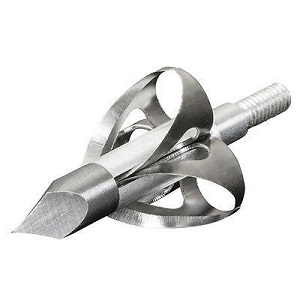
It never ceases to amaze me how creative broadhead manufacturers can get. The trick is knowing which head to use in a certain situation or type of hunt.
So, bow hunters, how in the world do you make sense of it all? All the choices out there can make even an advanced bow hunter feel like a beginner. How do you know which heads are the best choices for you?
We’ll cover a quiver-full of things to consider when choosing broadheads in the article, so if you want to jump straight to your topical interest, you can click the appropriate one below:
- Flight
- Edge Retention
- Ferrule Strength
- Cut Size
- Diameter vs. Total Cut
- Materials
- Blade Thickness
- Chisel Tips vs. Cut-On-Contact Tips
- Fixed-Blade Broadheads
- Mechanical Broadheads
- Hybrid Broadheads
- LIST of broadhead reviews published on N1 Outdoors website
Know Thy Broadheads
While almost any head on the market today can “get the job done” with a good shot, it is still important to make sure you are using the right head for your bow and the game you are pursuing. After all the time, energy, and money you’ve invested in practice and preparation, your broadhead is where the “rubber meets the road.”
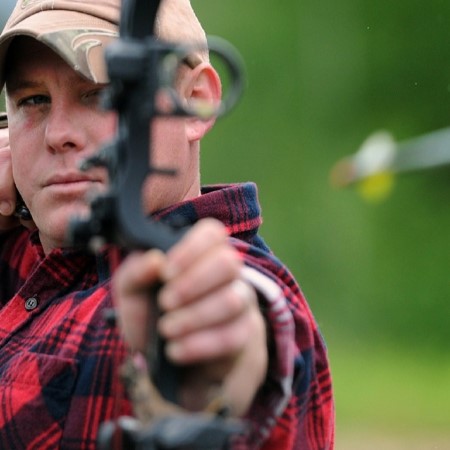
Be sure that you choose a broadhead that will fly accurately at your maximum range.
A little research and education can go a long way in making sure you are not disappointed after that hard earned shot. You will notice that I have provided some recommendations throughout this article. This is certainly not an exhaustive list, but I have personally tested each of these heads and found them to be among the best.
Fundamentally, you must keep in mind what really matters in a broadhead. Regardless of the brand and the design, there are several crucial factors that really matter.
Flight
A broadhead should provide you with absolute confidence in its flight. Consider what your maximum range is and make sure you choose a head that will fly accurately at that distance—even with some wind, a racing heart rate, and shooting while a little off balance.
Always make sure your bow is very well tuned (get help from a pro shop if you’re unsure) and you have the correct arrow spine for your bow’s poundage and draw length. Also, make sure the arrow spins true when the head is installed. You can spin it on your hand or on a table to confirm there is zero wobble to it.
Furthermore, the smaller the overall profile of the head, in length and width, the more forgiving it will be in flight. This is why mechanicals are often a good choice for long distance shots.
Keys: Lower profile (shorter and narrower) = Better Flight
Truer Spin = Better Flight
-

N1 Outdoors® N-Tune™ Nock Tuning Reflective Arrow Wraps – Put A Hole N1™
Price range: $18.99 through $27.99 Select options This product has multiple variants. The options may be chosen on the product page -
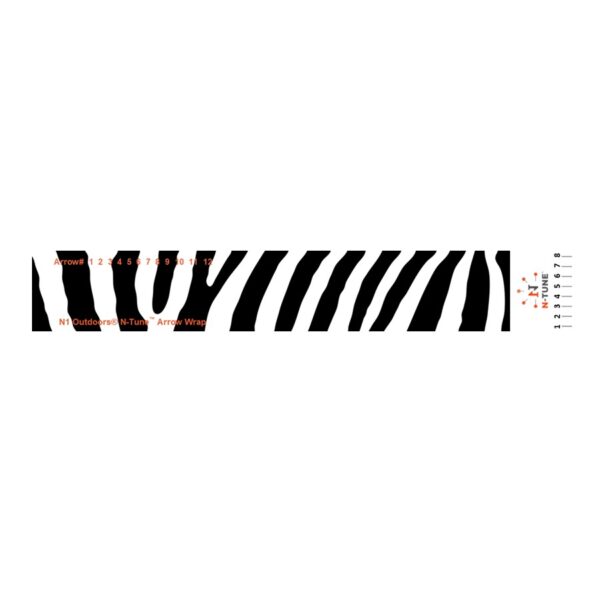
N1 Outdoors® N-Tune™ Nock Tuning Reflective Arrow Wraps – Zebra Stripes
Price range: $18.99 through $27.99 Select options This product has multiple variants. The options may be chosen on the product page -
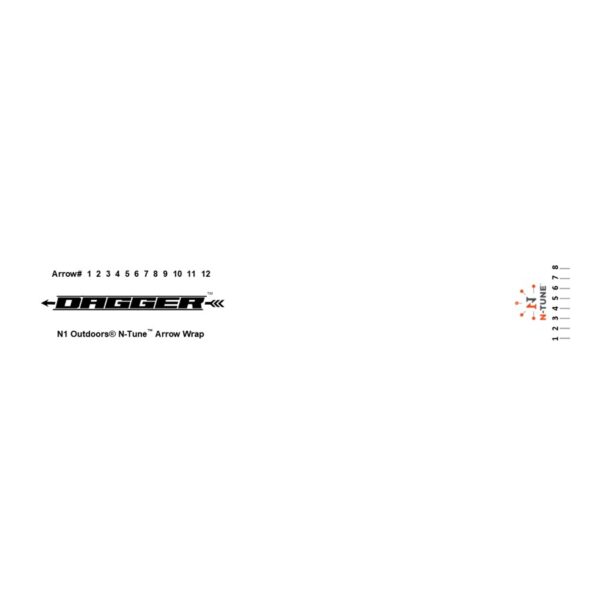
N1 Outdoors® N-Tune™ Nock Tuning Reflective Arrow Wraps – Dagger™
Price range: $18.99 through $27.99 Select options This product has multiple variants. The options may be chosen on the product page
Edge Retention
A broadhead should be be sharp and able to hold that sharpness after impact. How sharp it feels before it hits an animal doesn’t matter nearly as much as how sharp it is after it penetrates that first inch or two of hide, bone, and tissue.
If the edge chips or bends, it will not cut and penetrate effectively. This is why blades should be thick enough, and the steel strong enough, to hold their edge well. Broadheads with higher quality Tool Steels like 41L40, S7, and A2 shine in this arena.
(Some of the most durable heads I’ve ever tested in terms of edge retention are the Valkyrie heads. You can see my tests on this head here).
Keys: Thicker Blades = Better Edge Retention
Higher Quality Steel = Better Edge Retention
Ferrule Strength
The ferrule of a broadhead must be able to withstand great force upon impact. I have had multiple heads, both fixed and mechanical, bend or break at the ferrule upon impacting an animal. That almost always spells disaster for a hunt.
Quality materials and solid construction make a big difference. The shorter, thicker, and higher quality the material of the ferrule, the better it will stay in tact. I prefer high quality steel ferrules over titanium and aluminum for this reason.
Keys: Shorter, thicker ferrules = stronger ferrules
Higher quality steel Ferrules = Stronger Ferrules
Cut Size
A broadhead must have sufficient cut size to cause great tissue destruction while still ensuring deep penetration. With any animal I shoot at, my goal is to get as wide of a cut as possible while still providing a good likelihood of a pass through. Two holes will almost always provide a better blood trail than one hole. Given equal penetration, a wider diameter cut will slice through more tissue than a smaller diameter cut.
In the past, I used a head with a cutting diameter of one inch and always got a pass through. However, I knew I could cut more tissue and still get a pass through. So, I increased the size of the cutting diameter of my heads, with great results.
Likewise, I have used a head with a very wide diameter cut and gotten poor penetration and no pass through. Finding that sweet spot between the two extremes is my goal.
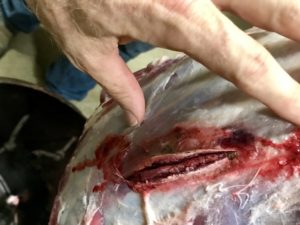
A Dead Ringer Broadhead exit wound through three ribs and shoulder blade of a hog.
Match Broadhead To Your Quarry
So, I will even change heads based on what animal I am hunting. If I’m going to be hunting turkey or other smaller animals like javelina, I use a very large cutting mechanical head, because that will cut a lot of tissue and still allow for a pass through. For a bigger animal like a wildebeest or elk, I like to use a smaller diameter cut to make sure I am getting deeper penetration.
I have also found that when it comes to blood trails, cutting diameter is more important than total cut. Allow me to explain with an example:
Diameter VS Total Cut
A four blade head with a one inch cutting diameter will have a “total cut” of two inches. Likewise, a two blade head with a two inch cutting diameter will also have a “total cut” of two inches. However, with all other things equal (penetration and shot placement) the two inch cutting diameter head will typically leave a better blood trail than the one inch cutting diameter head—even though the same amount of tissue is cut.
-
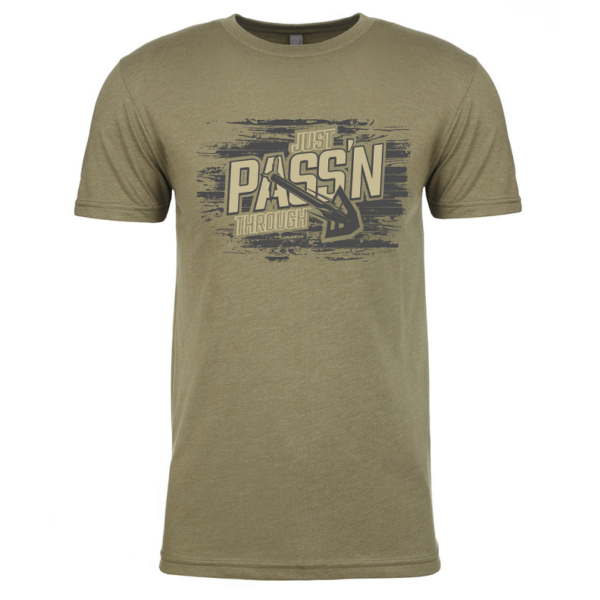
Just Pass’N Through™ Tee featuring Iron Will (Various Colors)
Price range: $24.99 through $28.99 Select options This product has multiple variants. The options may be chosen on the product page -
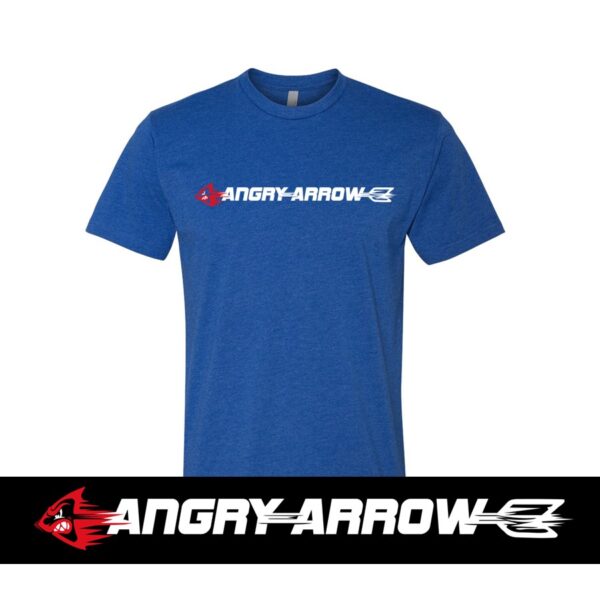
N1 Outdoors® Angry Arrow™ Tee
Price range: $24.99 through $28.99 Select options This product has multiple variants. The options may be chosen on the product page -
Sale!
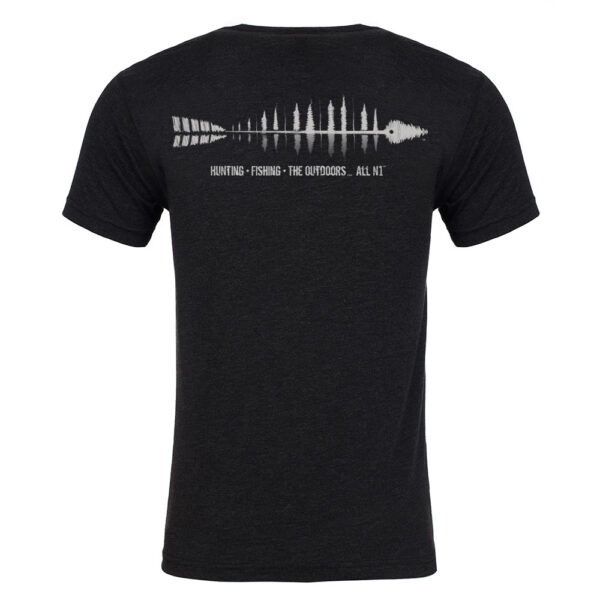
N1 Outdoors® Trifecta Fish Arrow Tee
Original price was: $22.99.$5.00Current price is: $5.00. Select options This product has multiple variants. The options may be chosen on the product page
The reason for this is that a smaller diameter cut is more likely to close up with tissue while the larger diameter cut is more likely to stretch and open up even more. I have seen this proven over and over again.
Another way to understand this principle is to “reduce it to the ridiculous.” Which head would you rather pass through your body: An eight blade head with one inch cutting diameter or a two blade head with an eight inch cutting diameter? Both will cut the same amount of tissue, but I would much rather have a one inch hole go through my body than an eight inch cut go through my body. Well, so would a deer!
Keys: Greater Tissue Cut with Pass Through = Greater Blood Trail
Greater Diameter Cut with Pass Through = Even Greater Blood Trail
So before you read any further, keep in mind the fundamental goal in selecting a head: It should fly well, not break, holds its edge, penetrate deeply, and cut a lot of tissue. Strive to find that balance between cutting as much tissue as possible and still providing a good chance at a pass through.
Now let’s examine some of the most important features of broadhead design. The more you understand about each feature, the more effectively you can decide what works best for your set up and your budget.
-
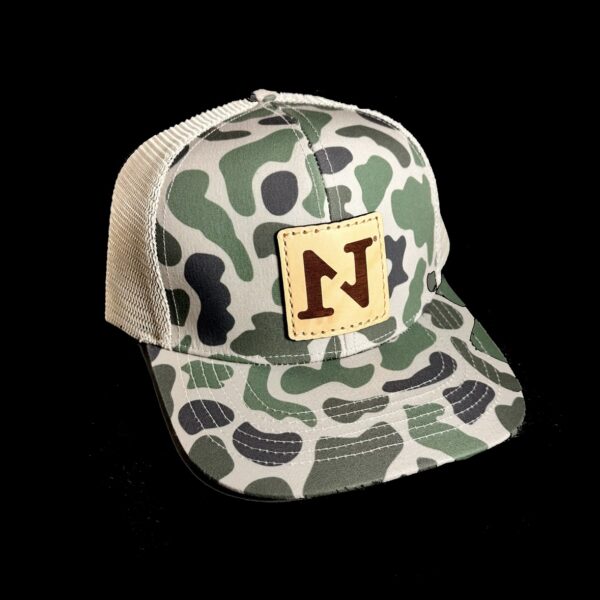
N1 Outdoors® Leather Patch Logo Retro Camo Trucker Hat
$29.99 Select options This product has multiple variants. The options may be chosen on the product page -
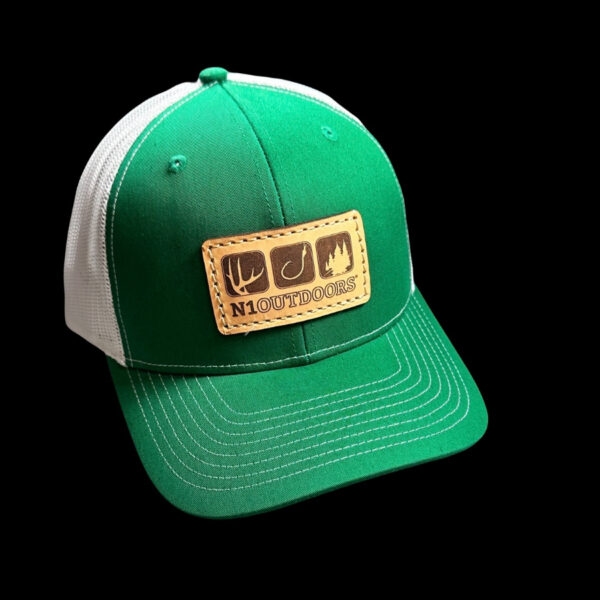
N1 Outdoors® Flagship TriBlock Leather Patch Hat (Kelly Green)
$29.99 Select options This product has multiple variants. The options may be chosen on the product page -
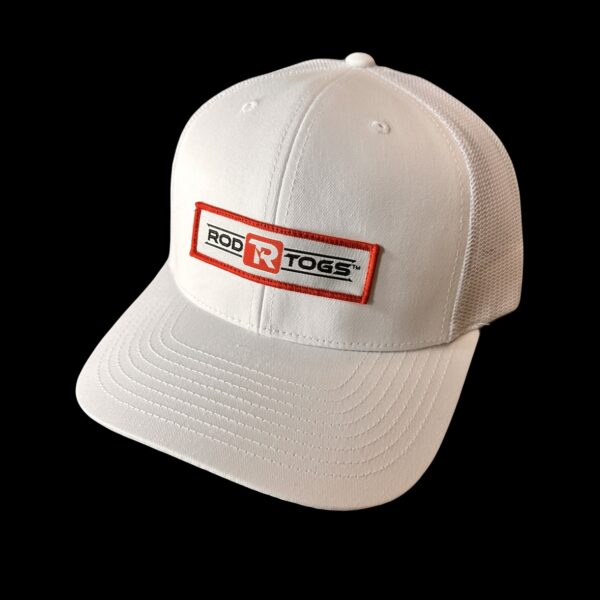
N1 Outdoors® RodTogs™ Patch Trucker Hat (White)
$26.99 Select options This product has multiple variants. The options may be chosen on the product page
Materials
There are three basic types of metals used in broadheads: aluminum, titanium, and steel. Each has its advantages and disadvantages. Aluminum and titanium are lighter than steel, which is why many heads tend to use them. It is easier for a head to make it to the 100gr weight if aluminum or titanium are used.
Aluminum
Aluminum is not as strong as steel. The best aluminums hardened in the best manner are still only as strong as the weaker steels. And, some aluminums are much weaker than others. The best aluminum for broadheads is 7075, which is quite a bit stronger than 6061.
So, if you are going to consider using a head with aluminum, try to find one made of 7075. One such head, is the Zeus broadhead, from New Era Archery.
If the manufacturer doesn’t say which aluminum is being used, it is probably 6061. That doesn’t mean its “bad” but it does mean that it’s a bit “weaker.”
Titanium
Titanium is stronger than aluminum. As with aluminum, there are different grades of titanium. Just because a head is said to be made of titanium doesn’t mean it is using the top grade. Typically, if the manufacturer doesn’t state what grade it is, it is probably the weaker grade. While titanium is stronger than aluminum, it is not as strong as many steels. Both titanium and aluminum have less resistance to impact than many steels, so I prefer that a head that at least has a leading tip made of well hardened steel.
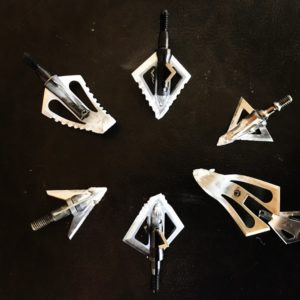
Contact Tip vs Chisel Tip heads (post-testing).
Steel
There are many different varieties of steel and they are not all created equal. While steel tends to be stronger than titanium and aluminum, there are significant differences in the various types of steel. When it comes to broadheads, two of the most significant ratings of steel are Rockwell Hardness (the “hardness” of the steel) and Charpy V Notch Scoring (the steel’s resistance to impact).
A steel may be very hard with a high Rockwell Rating, but may be very brittle and break apart or chip easily upon impact with a hard medium. Likewise, a steel can have a lower Rockwell Rating and not break apart, but may bend too easily.
Most steel heads use a 420 stainless steel, hardened to a level that is not too hard and not too soft. From my testing, it is obvious that some manufacturers are more successful at finding that balance than others.
There are also heads that are being made of tool steels and even very high end tool steels, such as 41L40, A2, and S7. With these premium steels, you will find a very high Rockwell hardness as well as a very high Charpy V Notch Score. Such heads will retain their structural integrity and razor edge far more effectively than typical stainless steels. They will cost a lot more money, but they are much more durable as well so they will last a long time.
Premium Tool Steels
In many of the tests I have done, I am continually impressed by how well premium tool steels keep their edge. While a typical stainless steel blade may become dull after cutting through 1/2” plywood, a head made of A2 or 41L40 or S7 will still be sticky sharp after cutting though that same board 5 times. That no doubt makes a difference in how well tissue, bones, and veins are cut.
A duller head can often just bend veins over, but a head that is sharp all the way through an animal will effectively cut those veins, producing greater blood letting.
Within steel heads there are also different ways the steel can be formed. Some use MIM (Metal Injected Molding), some are welded together, and some are machined. The machined steels tend to be much stronger than the MIM steels and welded models.
Component Heads And Single Piece Heads
There are also a couple different types of construction of the heads themselves—component heads and single piece heads. Each has their advantages.
Component heads can be made with very tight specifications, as each piece is easier to construct than an entire head. These high specs can enable them to fly extremely well. They are then held together with some sort of interlocking design and bolt.
The best component heads do not use bolts that are load bearing, but rather that interlock, and then held in place by the bolts.
Single piece heads have the advantage of not being put together; they are literally one piece of steel. Thus, they tend to be more durable than component heads. But all single piece heads are not created equal.
As mentioned earlier, if the head is machined out of a single block of steel it will tend to be much stronger than a head that is metal injected molded or welded.
Blade Thickness
All other things being equal, the thicker a blade is, the stronger it is. The thinner a blade is, the weaker it is. Thin blades may feel sharper out of the package, but they tend to lose that edge and bend or get nicked up more readily than thicker blades. I prefer blades that are at least .035” thick, but again, the thicker the better. When premium tool steels are used, a blade can still be relatively thin and still very strong.
Chisel Tips vs Cut on Contact Tips
From my testing, I only prefer a cut on contact head if is either a very thick two blade head made out of premium tool steel or a three blade single piece head, where all three blades come together to form the tip. Otherwise, the cut on contact heads are too likely to fold over. There are some chisel tips that are extremely sharp on their edges, like those of the QAD Exodus, or Wasp Dart for example. Those tend to have penetration closer to a cut on contact head but the strength of a chisel tip.
Fixed Blade Broadheads
Many people prefer fixed blade heads over mechanical heads because they are more durable and dependable. There are no moving parts and fewer things to break. Fixed blade heads typically come in either two, three, or four blade models. Let’s briefly examine each of those:
Two Blade Heads
These are a throwback to the proven designs of Native Americans and other similar societies around the world. They are simple, durable, accurate, and penetrate well. Two blade heads can either come in Single Bevel or Double Bevel Designs.
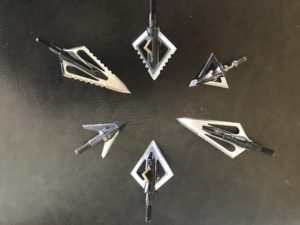
Fixed blade heads typically come in 2, 3, and 4-blade varieties.
Single Bevel Heads
A single bevel blade simply means that the edge of a blade is only sharpened on one side. A double bevel blade means that the edge of the blade is sharpened on both sides. There are advantages to each design. Typically, the choice between a single bevel or double bevel edge only comes into play with two blade heads.
The advantage of a single bevel is that the angle of the blade creates a torsional force upon impacting a medium, causing it to rotate. If fletching is arranged helically, the arrow is already spinning. Then upon impact, a single bevel head will continue to spin inside an animal.
This does a number of significant things. First, it creates a spiral wound channel. I typically find that the entrance hole of a single bevel head is not a slit, but rather a hole. The arrow is already spinning so much and is forced to spin more upon impact, creating a rounded entrance hole in the hide of an animal. The head continues to cut tissue not only in the direction the head is pointing, but also in the direction the head is spinning—thus cutting both inwardly and spirally.
With internal organs, this can have a similar effect to spinning a fork when eating spaghetti, wrapping the noodles around the fork, then cutting them off. A twisting head can twist the organs and then cut them as the head moves forward. I have seen this happen inside an animal many times and the devastation is undeniable.
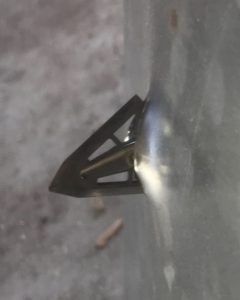
Here is an Iron Will broadhead penetrating a 16 gauge steel plate.
Second, a single bevel head typically breaches bone very effectively. As the tip of a head enters a bone, the head also twists and causes that bone to split apart and not just get cut. Then the arrow passes through that split in the bone. This is especially significant when hunting very large animals such as Cape Buffalo. If a head cannot effectively breach that bone, penetration will suffer.
A third way the single bevel head works is that due to its twisting inside an animal, it is not likely for the arrow to back out of an animal if there is not a pass through (try pulling one out of a target and you will see what I mean). Often times, heads are sharpened on the back edges to allow the heads to continue to cut tissue in all directions inside of an animal.
Double Bevel Heads
Double bevel heads do not have this spiraling effect. However, they can often penetrate more deeply for two reasons: First, they can be sharpened to a finer edge. Secondly, they are only cutting tissue in a forward fashion and not a twisting fashion. They will not typically breach large bone as effectively as a single bevel, they will not create a spiral wound channel, and the arrow can back out of an animal more readily than a single bevel. But, they will penetrate hide and tissue more effectively.
As for which is better, it really does depend on your bow’s set up and your quarry. If you are generating lower kinetic energy and need penetration to be as deep as possible, a double bevel may be a better choice.
If you have a bit more “normal” kinetic energy, or are hunting larger animals with heavier arrows, a single bevel will likely cause more damage to the animal.
From my testing, the only concern I have with two blade fixed heads is the size of the entry and exit holes. If an animal does not expire quickly, you are going to be forced to follow a blood trail.
Smaller diameter cuts do not allow the degree of blood letting that larger cuts do. There may be plenty of damage inside the animal, but the blood trail may be compromised.
Recommended Single Bevel Heads: Bishop Archery (Bridgeport/Pipeline), Cutthroat Broadheads. Recommended Double Bevel Heads: German Kinetics Silver Flame, VPA, Steelforce
Three Blade Heads
There are some great strengths to using a three blade head, as evidenced by their popularity on the market. Three blade heads tend to make more of a “hole” than a slit. This makes the hole more difficult to close up and facilitates better blood letting.
If the heads are a one piece construction with the correct angles, like VPAs or Bishops, you can easily sharpen two blades at a time by laying them flat on a stone and moving them back and forth, then rotating till all the blades are covered.
Recommended 3 Blade Heads: QAD Exodus, Bishop (Bridgeport/Pipeline) Holy Trinity, VPA, Muzzy Trocar
Four Blade Heads
Some heads use a four blade design. Most of those have two primary blades, followed by two smaller, “bleeder” blades. Others use four blades that are all the same size, such as Slick Tricks, Wac’ems or Wasps.
From my testing, I have come to prefer a wider cut three blade head over a four blade head with smaller, equal sized blades. That fourth blade does cut more tissue, but it also impedes penetration more, and the hole is not as big as that of a wider cut three blade head.
A wider hole tends to produce a better blood trail than a smaller hole, whether it’s three blades or four. That being said, the four blade design of two larger blades and two bleeders is a very good option. They tend to be more forgiving in flight than a three blade head, all other things equal.
Whether you want a two leading blade cut on contact tip or a chisel tip is another question as well. See the earlier section discussing the pros and cons of these two designs.
Recommended 4 blade Heads: Iron Will, Trophy Taker A-TAC, Slick Trick Magnums, Magnus Black Hornet.
Mechanical Broadheads
Mechanical heads have come a long way in recent years. They have two primary advantages over fixed blade heads: Smaller surface area in flight (which allows them to be more forgiving in flight) and larger cut once the blades are deployed.
For example, even with a very well tuned bow, it would be quite difficult to shoot a fixed blade head with a two inch cutting diameter and have it fly well. But with a mechanical, you can get that two inch cutting diameter in a small, great flying package.
There are two primary styles of mechanical heads based on how the blades deploy upon impact.
Over the Top Deploying
The first mechanical heads to hit the market worked this way. The blades are on hinges and folds upward toward the tip of the head. They are either held in place by friction or a rubber band.
Upon impact, the blades peel back like a banana would, opening up to their full cutting diameter. They will not open fully until after they have entered the animal, thus the entrance holes are basically the same size as the head in the closed position.
Recommended Over the Top Deploying Mechanicals: Rocket Steelhead, NAP Spitfire, Wasp Jak-Knife, Dead Ringer Trauma, Grim Reaper
Rear Deploying
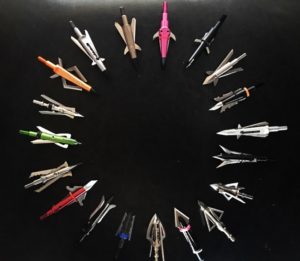
Mechanical heads (pre-testing). There is no shortage of them to choose from!
In recent years, many heads have begun using various rear deploying mechanisms. With these heads, the blades swing open from the rear and are fully deployed by the time they reach the hide of an animal. Thus the entrance holes are the same size as the fully deployed blades.
Both of these mechanisms have their loyal followings and both can work well on animals. I have successfully taken many animals with both. However, there are some observations worth noting.
With over the top mechanicals, the entrance holes are small but the internal damage is great. They do tend to penetrate more deeply than rear deploying blades, simply because they cut less tissue upon entrance.
If they pass all the way through the animal, the exit hole is the full size of the fully deployed blades. But if they do not pass all the way through, you have a small entrance hole and no exit hole. That spells a big problem for blood trails.
With rear deploying mechs, the entrance hole will be great; it will be the size of the fully deployed heads. But because of that, penetration can be compromised because it has to cut through the hide with that wide cut. However, you can be confident you are going to have at least one big hole. Between these two styles, after all my testing I prefer the rear deploying mechanical heads by a large margin.
-
Sale!
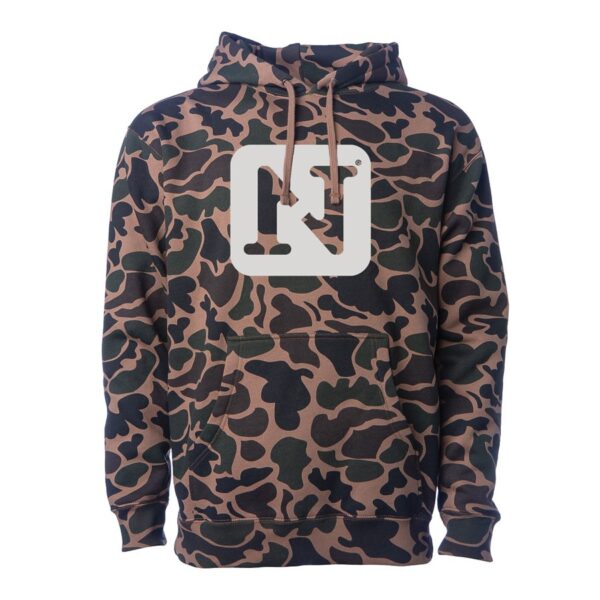
N1 Outdoors® Duck Camo Block Logo Heavyweight Hoodie
$34.00 Select options This product has multiple variants. The options may be chosen on the product page -
Sale!
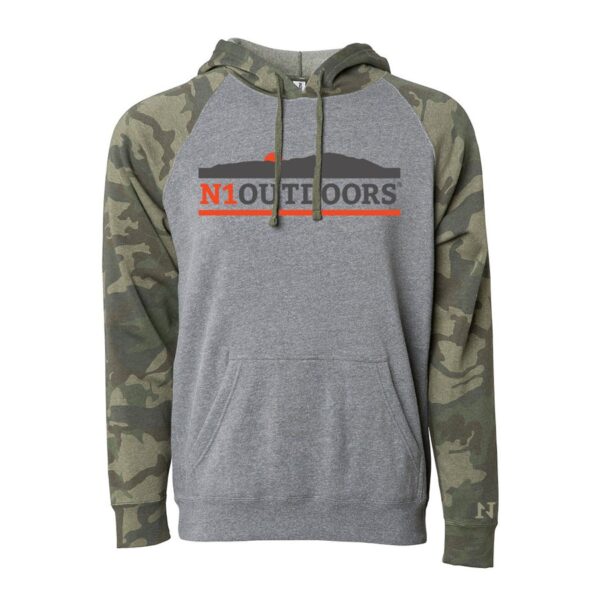
N1 Outdoors® “Sunset Mountain” Pullover Hoodie
$34.00 Select options This product has multiple variants. The options may be chosen on the product page -
Sale!
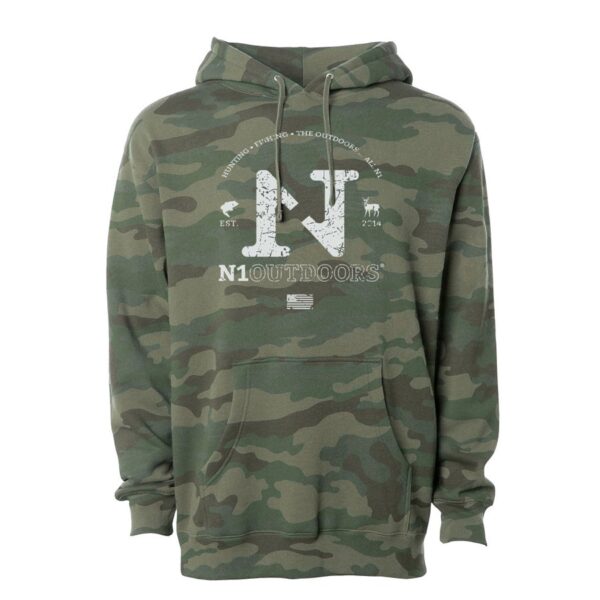
N1 Outdoors® Est. 2014 Forest Camo Heavyweight Sweatshirt Hoodie
$34.00 Select options This product has multiple variants. The options may be chosen on the product page
Recommended Rear Deploying Mechs: Rage Hypodermic and Trypan, NAP Killzone, G5 Deadmeat
Hybrid Broadheads
Several different manufacturers have come out with hybrid heads, which are a combination of both a fixed blade and a mechanical head. There is typically a smaller two blade fixed head followed by a larger cut of mechanical blades.
I have taken a number of animals with these and tested them quite a bit. They certainly have their niche. The only downside is that you will want to make sure you have enough kinetic energy to drive all those blades deeply into an animal. Again, I prefer the rear deploying mechanical blades in a hybrid head. If they are over the top deploying, you will not get a very big entrance hole and an exit hole will be fairly difficult to achieve due to the large cut.
Recommended Hybrid Heads: Bloodsport Archery Gravedigger, Muzzy Hybrid Trocar HB-Ti.
Conclusion
Selecting a broadhead can be a pretty daunting task. And it gets extra confusing when all of your buddies each have their own strong opinions based on their personal experience from the last season. But you owe it to yourself and to the animal to make the most informed decision you can about which head is best for your purposes. Hopefully, this article will help you to make a bit more sense of the options and choices available.
For specifics on other heads that may not be listed in this article, click on the names/brands below:
List Of Broadhead Reviews on N1outdoors.com (Click To Read More!)
- Afflictor
- Annihilator Original and XL
- Annihilator Katana
- Arachnid (Black Widow)
- Big Game 3 (by DXB)
- Bishop
- Blood Therapy OCD
- Bloodflow 1.5
- Bowmar BEAST Broadheads
- Cheap Shot Broadheads by Cold Steel
- Crimson Talon Fixed Blades
- Crimson Talon Battleaxe
- Day Six Evo and Evo X
- DeadMeat
- Dirt Nap DRT
- Exact Archery Broadheads
- Excalibur Bolt Cutter
- G5 Dead Meat
- G5 Megameat
- G5 Striker X
- Grave Digger
- Grim Reaper 1-3/8″ w/Pro Series Tip
- Iron Will Original
- Iron Will Wide
- Iron Will Wide Solid
- Iron Will Wide Turkey Head
- Iron Will Single Bevel Solid
- Innerloc Carnage
- Lone Wolf Broadheads
- Magnus
- Mohican Sneak (Project One)
- Muzzy Trocar
- Muzzy Trocar Ti 100 grain
- Muzzy Trocar HBX Hybrid
- NAP Thunderhead
- NAP Killzone
- NAP Spitfire
- QAD Exodus
- Ozcut Elite Series 3
- Ozcut Hurricane
- Rage X-Treme 4-blade
- Rage Trypan NC (No Collar)
- Sevr 1.5
- Sevr 1.7
- Sevr 2.1
- Sevr Ti 2.0
- Sevr Robusto
- Slang Blade by Fire In The Hole
- Slick Trick Standard 125-grain
- Thorn Crown
- Tooth of the Arrow
- Toxic Broadheads by Flying Arrow Archery
- Trifecta Fixed Blade
- TruGlo Titanium X 3-Blade
- Tuffhead Evolution 3-Blade
- Vortex
- VPA Double and Single Bevel
- VPA Turkey Spur
- Zeus Broadheads
Please also check out my YouTube Channel as well, Lusk Archery Adventures, to see videos of broadhead tests and over 50 hunts with those heads as well. And don’t hesitate to contact me with any questions through the channel.
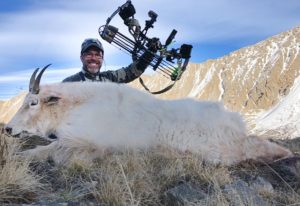
(Learn about N1 Outdoors archery apparel and other hunting and fishing apparel designs.)

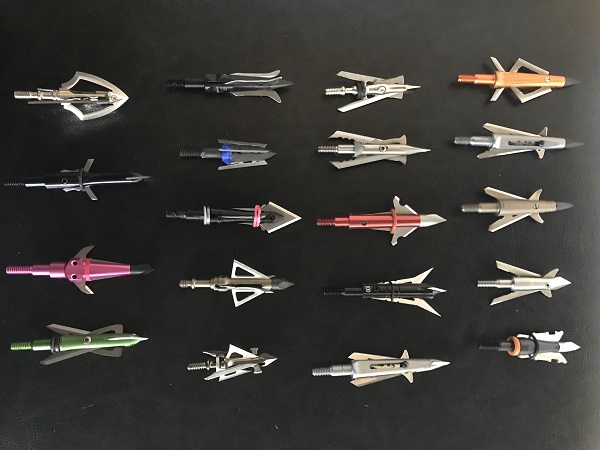





I have known John for almost 30 years now, we have had a number of adventures together. I can tell you he did the testing and analysis to back up his article. John is also a scholar in Biblical studies and one of the best in sharing the word of God from the Bible not from opinion. If you are ever in Des Moines find his church you will not regret it
Great stuff here – tons of valuable information and insight from a true pro. Thanks for sharing John!
Incredibly thorough info from John on this one. Super thankful to hear from his expertise on broadheads!
Very thorough and helpful!
John. when are you going to put out your own line of broad heads ??
Haha. Thanks Scott. I sure do make some suggestions to the designers I know and work with. If I were to make one it would be a Premium Mech. There are many premium fixed heads now with top
Tier materials. But mechs just don’t follow that plan for some reason.
Great reading! I feel like momentum of the broadhead/arrow combo is the most important. I like a passthrough everytime, so I shoot a heavy setup for whitetail. I appreciate the time and research spent on broadhead performance!
Yep. I like a heavier set up as well, while still have a fairly fast arrow. Much better penetration that way and a much quieter shot.
Great info and I have read and heard that before about the cut of a 4 blade fixed compared to a 2 blade expandable. The same 2 inch cut maybe but a smaller hole to bleed. Yet I am reading some deer and elk hit with 2 inch expandables, some lung shots supposedly that provided little blood. so who Knows?
Yeah that’s a great example of needing to match your broadhead to your quarry. For a whitetails I would rather have a 2” mech hole cause I know I’m going to get great penetration on an animal that size. But on an elk, I would never use a 2” mech. Sure they can work, but it’s not the best choice. In a big bodied animal like that you would want a smaller cut than that, cause you want deep penetration. I like to use the largest cutting head that will pretty much guarantee me a pass through. I want a good entrance and a good exit hole. I want to do that with the largest cut and toughest blades possible—and still getting a pass through.